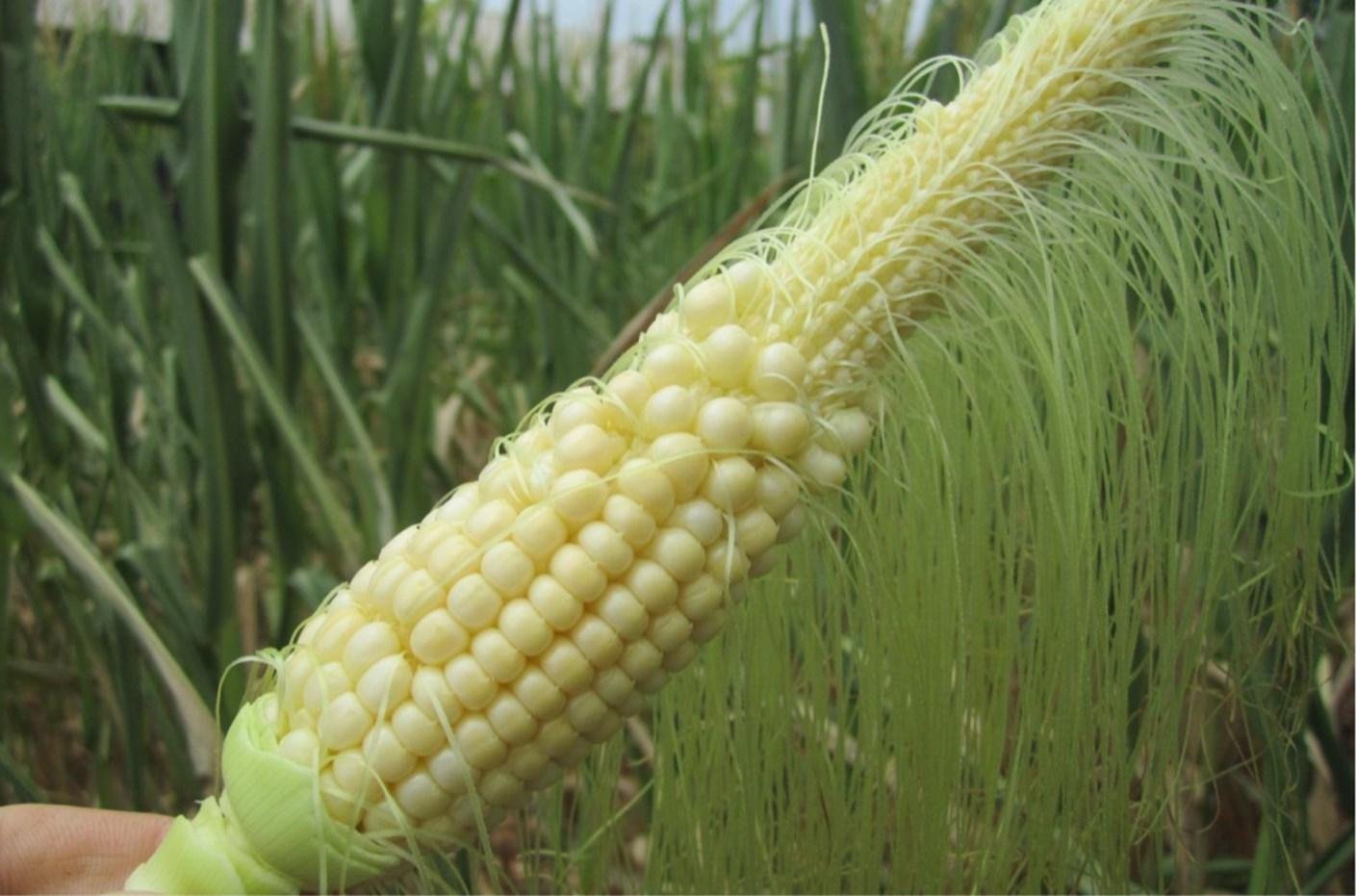Feeding This Year’s Corn Silage Crop
Silks remain attached in region not pollinated and no grain development. Photo courtesy of Dr. Chad Lee
From the August Issue of Kentucky Dairy Notes
Preliminary reports indicate that this year’s corn silage crop in some locations across the state may have suffered from the lack of early rains during pollination resulting in spotty or lack of ear development and/or reduced plant growth. In normal years, the ear with its corn grain accounts for approximately half of the weight harvested and is an economical source of starch and energy for livestock. With reduced yields of grain and possibly forage component, modifications to this year’s feeding programs for not only the milking herd, but also dry cows and heifers, may be necessary.
With little ear development, the amount of energy lost because of lack or reduced grain development will need to be replaced with the addition of an alternative energy source, such as additional corn grain or other by-products in the rations at the time fed. Giving some thought and having preliminary conversations with your nutritionist can help in developing a preliminary plan for the most economical feeding program going forward. This is extremely important to capitalize on today’s more favorable milk prices. The key is to be proactive and not reactive to the cards mother nature has dealt.
Assess potential ear and forage yield (pollination/ear development and forage yields) by scouting corn silage fields. Preliminary reports indicate that grain and forage yields vary not only between fields, but also within a field. Some are also noting variation within the corn row itself.
Fields normally earmarked for corn grain harvest may need to be harvested as silage to harvest an adequate amount of silage to feed all cattle.
At and after harvest, sample and test chopped silage to determine its nutrient content and use these results to balance rations accordingly. If grain development was limited, more “grain” will need to be added to these rations at the time of feeding. Checking for NDF digestibility might also be warranted.
Author: Dr. Donna M. Amaral-Phillips
Corn Harvest Tips
The moisture of the corn plant determines the time to harvest. Harvest at 62 to 65% moisture (35 to 38% DM) (Choppers without kernel processors should be harvested a little wetter– 32 to 35% DM to allow breakage of corn kernels.)
Healthy corn plants dry down 0.5 to 1.0%/day.
Kernel processers need to be working properly to adequately break up corn kernels and cob. Roller spacing on kernel processors need to be so that no more than 2 or 3 half or whole kernels of corn (cob in 8 pieces) are found in a chopped sample contained in a 32 oz. cup. Spacing between rollers should be such that a dime will not fit between the rollers. Kernel processors do increase power requirements and thus diesel usage. However, for each additional gallon of diesel at $6/gal. used, only 0.05 lbs of milk ($22/cwt) are needed to recoup additional fuel cost with 20 ton/acre corn silage. Extra diesel costs can very quickly be recouped from additional milk volume and thus income.
For bunkers and piles, pack the chopped silage with a tractor weighing 800 times the number of wet tons delivered per hour at a speed of 1.5 to 2.5 mph.
Cover top of uprights, piles, and bunkers with plastic. For bunkers, line bunker sides with plastic with extra plastic overlapping the walls. Once filled, use the extra plastic to cover part of the top closest to the walls to prevent water from seeping under the top cover of plastic and causing spoilage.

